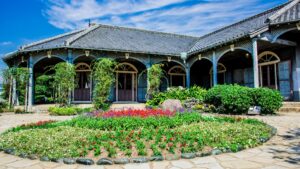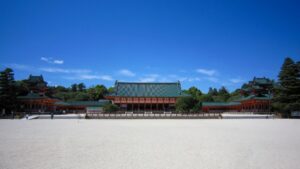Konkai Komyoji Temple, the base of the Shinsengumi samurai who followed the Bushido
On the days of the vernal equinox and the autumnal equinoxes, the Konkai Komyoji Temple offers a breathtaking view of the setting sun turning vermilion in the western sky. The temple was founded in 1175 when Honen, a founder of the Jodo sect of Buddhism, descended from Mount Hiei to spread his teachings here. Situated just 2 km east of the Kyoto Imperial Palace, the "Kyoto Shugoshoku” or "Kyoto Guardians" headquarters was set up here in the late Edo period (1603-1868). This function was to ensure the safety and security of Kyoto. The Shinsengumi, the most substantial group of swordsmen, led by Hijikata Toshizo (1835-1869, 土方歳三), played a major role in maintaining the security of Kyoto under the Kyoto Shugosyoku. Hijikata Toshizo shared similarities with Jean Lannes, who fought under Napoleon. Both individuals hailed from peasant backgrounds and demonstrated exceptional leadership skills and military talents. The Boshin War, led by Hijikata, and the Battle of Marengo, led by Lannes, were fought amidst challenging circumstances. Nevertheless, they both exhibited unwavering command over their troops, employing skillful strategies and tactics that showcased their indomitable spirits. Moreover, they were revered military figures who were adored by their subordinates but tragically met their ends on the battlefield. Let's see how Hijikata Toshizo lived his life fighting as a samurai to the end.

The Shinsengumi began its mission of safeguarding peace and order in Kyoto
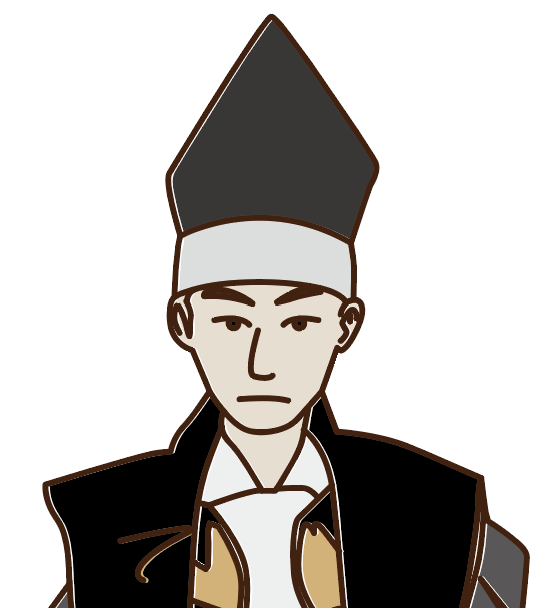
Toward the end of the Tokugawa shogunate in the 19th century, the authority of the ruling regime was in decline. The opposing forces of exclusionism and openness, subversion, and loyalty, clashed, leading to a deteriorating security situation marked by street killings, assassinations, and robberies perpetrated by radical masterless samurai called "Ronin" in Kyoto. In 1863, before the 14th Shogun, Tokugawa Iemochi's visit to Kyoto for an audience with Emperor Komei (1831-1867, 孝明天皇) after 229 years, the Kyoto Shugoshoku was established to maintain security in the city. The feudal lord of the Aizu domain, Matsudaira Katamori (1836-1893, 松平容保), was appointed to oversee this critical task. However, facing chaotic circumstances, he was unable to effectively handle the situation by relying solely on members of the Aizu domain and the shogunate. As a result, the Shinsengumi began to play a pivotal role in safeguarding the peace and order in Kyoto as an irregular security force under the control of the Aizu domain in 1863.
Ikedaya Incident, two hours of fierce fighting subdued radical samurai
In 1864, four years before the "Taisei Hokan" (Return of the Tokugawa Shogun’s Sovereignty to the Emperor), a shocking act of terrorism planned by the pro-Emperor factions of the Choshu and Tosa domains was uncoThey planned to set fire to the Imperial Palace on a windy night before the Gion Festival, exploiting the ensuing chaos to capture Prince Nakagawa Asahiko, assassinate Tokugawa Yoshinobu (1837-1913, 徳川慶喜, later the 15th Shogun), Matsudaira Katamori of the Aizu Lord, and ultimately move Emperor Komei from Kyoto to Choshu.
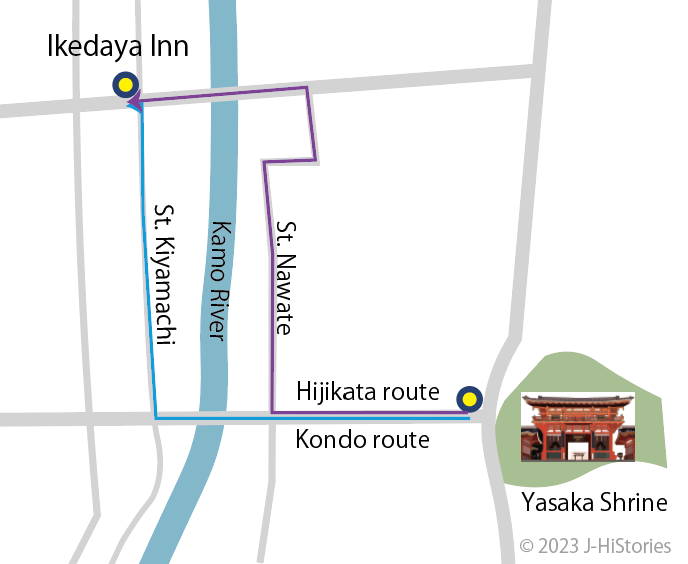
Upon receiving this intelligence, the Shinsengumi launched a search for the masterminds behind the plot. The Kondo team began their investigation on Kiyamachi Street, starting near Yasaka Shrine, while the Hijikata team scoured Nawate Street in their pursuit. However, time passed without any discoveries. It was approximately 10:00 p.m. when Kondo's team finally discovered about 20 anti-shogunal forces at the Ikedaya Inn. The Shinsengumi swiftly stormed in and went up to the second floor. Proclaiming “Joi" as a sign of loyalty to the Tokugawa Shogunate, Kondo tried to arrest them. However, one samurai drew his sword and attacked, resulting in a fierce sword fight. A close-quarters combat ensued in the dimly lit and confined spaces of the Ikedaya Inn. Hijikata's group arrived at the Ikedaya Inn later but managed to defeat their opponents one by one. The battle lasted for two hours, culminating in the deaths of four or five, the capture of about 10, and the escape of several others. The Ikedaya Incident brought widespread recognition to the name of the Shinsengumi across Japan.

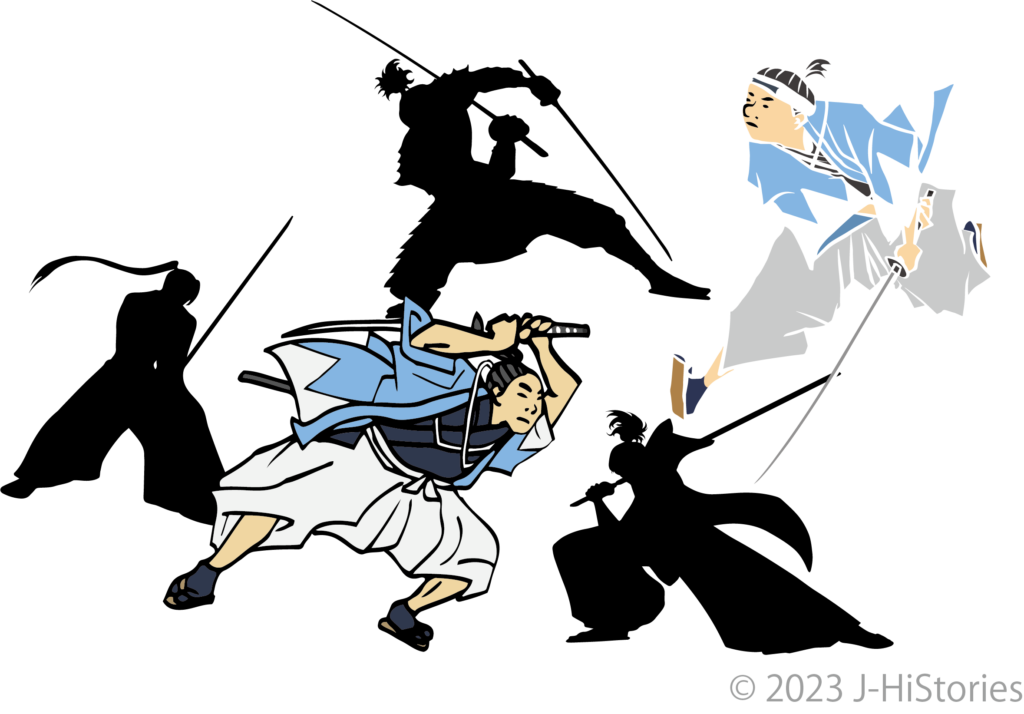
After the Ikedaya Incident
In recognition of their efforts, the Shinsengumi received a letter of appreciation and a prize of about 200 Ryo (equivalent to 10 million yen in today's value) from the Imperial Court, the Shogunate, and the Aizu domain. Conversely, the anti-Shogunate forces felt fear and hate towards the Shinsengumi. The following month, despite being outnumbered, the radical faction of the Choshu domain launched an offensive on Kyoto, aiming to reclaim their lost territory with the aid of cannons. Tokugawa Yoshinobu and Matsudaira Katamori, the head of the Kyoto Shugoshoku, joined forces with the Shinsengumi, the Satsuma domain, and other allies to defend the Forbidden Imperial Palace. The Shinsengumi was the strongest, defeating the Choshu samurai, among others, in intense battles.
Secrets of the Shinsengumi Strength
No.1: Practical training
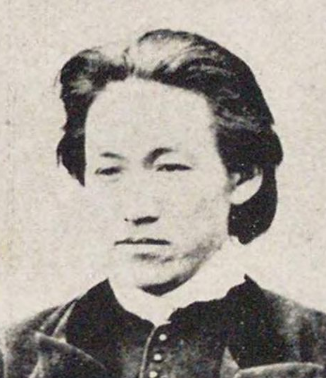
国立国会図書館
「近代日本人の肖像」
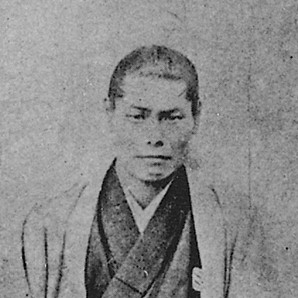
国立国会図書館
「近代日本人の肖像」
A formidable group of skilled swordsmen comprised the Shinsengumi led by Kondo Isami, the organization's leader, and Hijikata Toshizo, the vice-chief. They were skilled in Tennen Rishin-Ryu, a style that emphasized practicality by integrating swordsmanship with martial arts techniques such as judo. The training regimen of the Shinsengumi revolved around simulating real-life combat scenarios. This approach often led to injuries such as bruises and broken bones. In addition, to hone their ability to respond immediately to any situation, for example, they would be sent out suddenly to train in the middle of the night, assuming they would be fighting in the dark.
No.2: Hijikata’s Leadership
Hijikata disciplined himself and imposed strict discipline on his order to make the Shinsengumi a true warrior group. For example, they would immediately commit seppuku if they broke the 8 p.m. curfew. On the other hand, he kept the peace in Kyoto by constantly encouraging the members that the Samurai would not be defeated until death.
No. 3: Bushido, The Samurai Spirit Should Be More Than Samurai
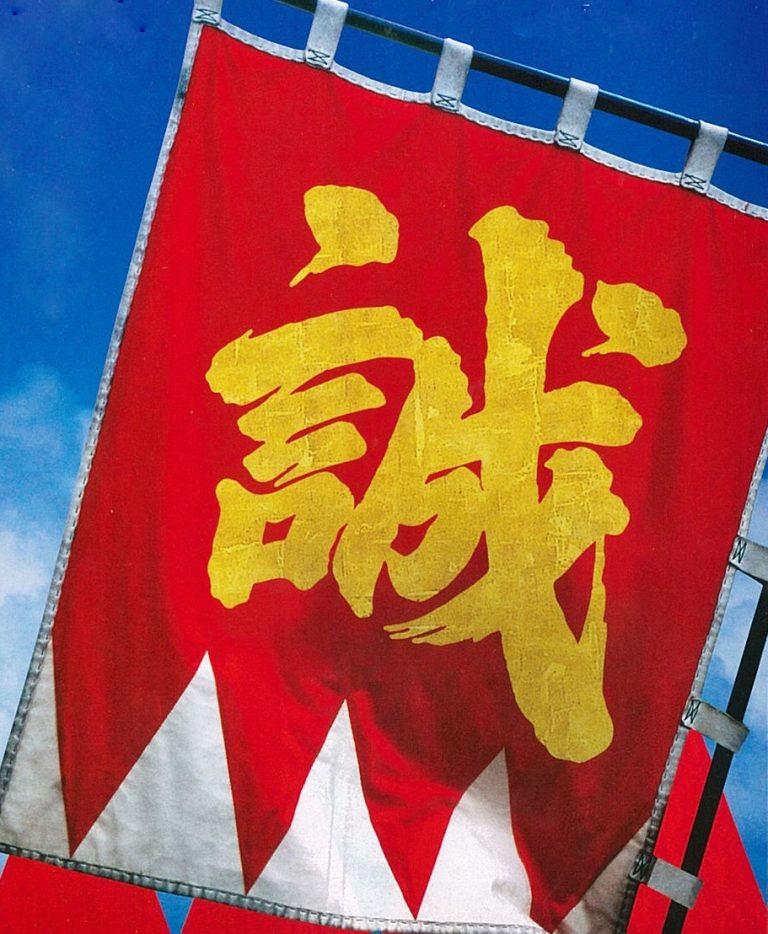
The foremost principle outlined in the Shinsengumi Law is the adherence to “Bushido”, the code of conduct and spirit of the samurai. Even though, Kondo and Hijikata, both hailing from peasant backgrounds, strove to embody the true essence of the samurai. Symbolizing their commitment, the character "Sincerity (誠)" was inscribed on the flag of the Shinsengumi.
The Shinsengumi, martyrs for the dying Tokugawa Shogunate
At the outbreak of the Boshin War at Toba-Fushimi in southern Kyoto, the Shinsengumi joined the former shogunate army. However, they were decisively defeated by the overwhelming firepower of the modernized Western weapons embodied by the new Meiji Government side. In the aftermath, the Shinsengumi, having been forced to retreat from Kyoto toward Yamanashi. Tragically, Kondo Isami was captured and executed in 1868. After that, the remaining members of the Shinsengumi dispersed and disappeared. Hijikata Toshizo went to Hakodate and commanded the Hakodate War, the final battle of the Boshin War, and continued to fight but was killed by a bullet at the age of 34. His farewell poem: Though my physical form may decay in Hakodate, my spirit shall remain steadfast to protect the Shogun of Edo.
Setting sun in vermilion seems to be Shinsengumi's spirit to protect the Shogun and the emperors

"I will become a renowned warrior and make my name known throughout the land." These were the words of Hijikata during his youth, and his belief ultimately came to fruition. The morning sun rises from Konkai Komyoji Temple, east of the Kyoto Imperial Palace, and the setting sun burns bright vermilion in the direction of the Kyoto Imperial Palace, west of Konkai Komyoji Temple. The spirits of the Shinsengumi seem to be protecting the Shogun and the Emperor even now.
Hijikata Toshizo Timeline
| 1835 | Hijikat Toshizo was born | Age=1 |
| 1853 | Commodore Perry of the US entered port at Uraga at the entrance to Edo Bay | 18 |
| 1854/3 | The Treaty of Peace and Amity between the US and Japan was concluded | 19 |
| 1862 | Katamori became Kyoto Shogoshoku | 27 |
| 1863/2 | Hijikata arrived Kyoto with Kondo and members | 28 |
| /5 | Choshu bombarded the Western fleets (Shimonoseki War) | - |
| /8 | Anglo-Satsuma War | - |
| 1864/07 | Ikedaya Inn incident | 29 |
| 1864/08 | Kinmon incident, Yoshinobu fought and protected the Kyoto Palace | 29 |
| 1867/1 | Tokugawa Yoshinobu was appointed the 15th Shogun | 32 |
| 1867/01 | Emperor Komei passed away | 32 |
| 1867/11/10 | Taisei Hokan, Tokugawa's political power was officially returned to Emperor Meiji | 32 |
| 1867/12/5 | The Decree for the Restoration of Imperial Rule | 32 |
| 1868/1/3 | The Boshin War started at Toba-Fushimi | 33 |
| 1868/4/11 | Edo castle surrendered without bloodshed to Imperial Army | 33 |
| 1868/4 | Kondo Isami was executed | 33 |
| 1868/8 | Enomoto Takewaki led Kaiyomaru fleet out of Shinagawa to Hakodate | 33 |
| 1868/9 | Aizu War ended | 33 |
| 1868/10/23 | The Meiji Restoration | 33 |
| 1869/4/9 | Meiji Government Force landed on Otobe | 34 |
| 1869/4/13 | Futamata-guchi battle started | 34 |
| 1869/5/11 | Hijikata passed away | 34 |
| 1869/5/18 | Boshin War ended at Hakodate | - |
Recommendations to visit
- Access: 1 hour from Kyoto Station. Take the Karasuma Line subway at Kyoto station bound for "Kokusai Kaikan mae (国際会館前)". Get off at "Karasuma Maruta-machi (烏丸丸太町). Take bus #93 bound for "Kinrin shako-mae (錦林車庫前)” and then get off the bus at "Okazaki michi (岡崎道)" bus stop, then a 5-minute walk.

